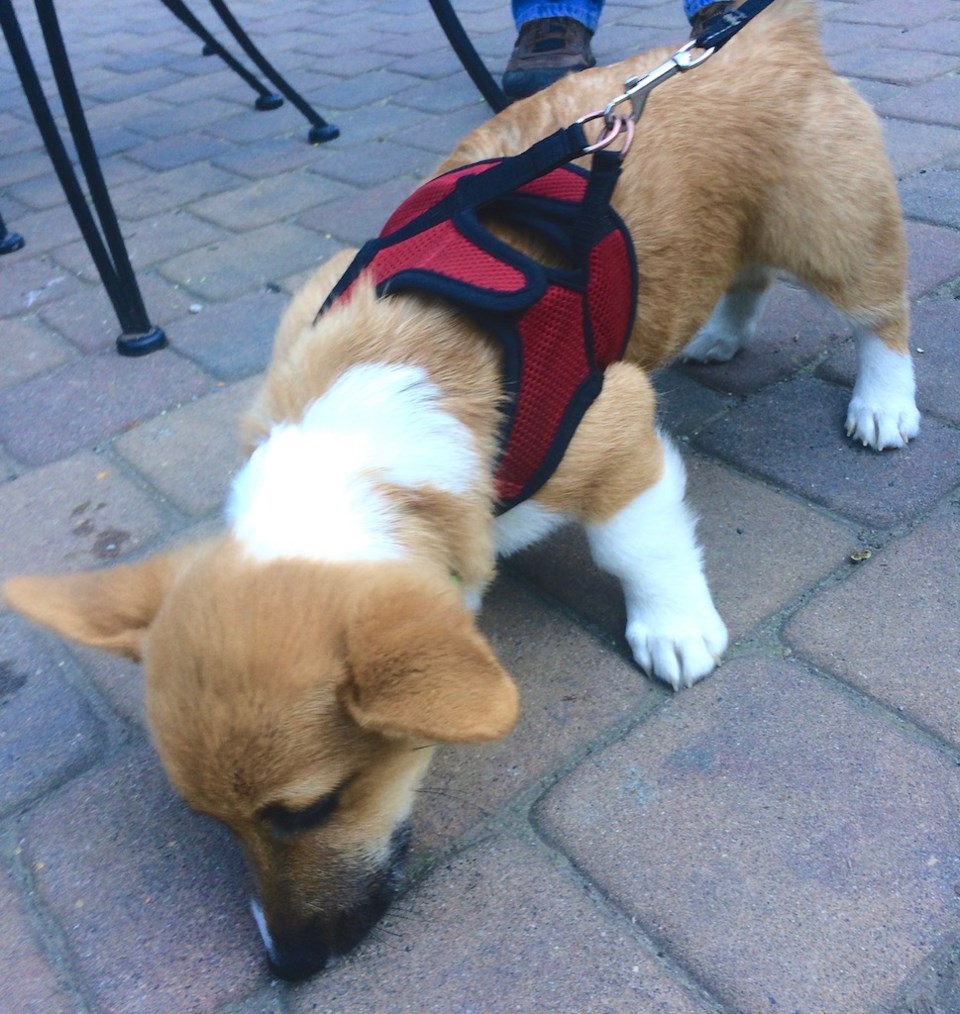Last year, CAWES (Coast Animal Welfare & Education Society) put on an educational event called “Ask an Animal Expert” where a panel of two off-island animal experts answered questions from the public. One of the many things I learned that afternoon is the risk to our dogs from wearing certain kinds of collar. For many breeds of dog, using a collar for restraint can cause real problems with the trachea (windpipe) and the larynx (voice box), because of the stress on the throat.
To get technical, inappropriate collars can cause laryngeal hemiplegia and laryngeal paralysis, a respiratory disorder where one or both of the vocal chords become paralyzed. This restricts airflow and can cause an obstruction if one of them gets sucked into the airway during breathing. Although it is not common, it can be fatal if left untreated. This is not anything a loving dog owner willingly does to their dog. So what is the low-down on collars and harnesses?
Experts emphasize that there is no single answer. It depends on your particular dog – its size, its breed, its health, its behaviour, its personality and why you are using a collar or harness anyway. So, as usual with our companion animals, choosing what is best for them requires us to pay attention and get curious about the animal’s experience.
Using a collar may well be fine if your dog has no trachea or respiratory issues or if s/he does not pull or lunge on the leash. That said, experts do not recommend the metal choke collar or the pinch-prong collar. Both can hurt your dog and both involve choking your dog to get her/his attention. There are better ways to do that. Positive reinforcement of desired behaviour is always better than negative reaction to unwanted behaviour.
One variation on the conventional necklace type collar is the Martingale, also known as a slip collar or ‘greyhound collar’. This works well for slender dogs that can slip out of their collars because of their build, such as Greyhounds, Whippets, Afghan Hounds, and also for dogs with thick necks and little difference in diameter of head and neck, such as French Bulldogs. Martingales gently close around the neck when a dog pulls or backs up.
One important point about collars on dogs and cats too is that they need to fit just right: too tight will cause the animal distress, but too loose creates a danger of the collar snagging on a branch or fence if the animal is out and about (or in the case of cats, putting their leg through their collar). The experts recommend that you should be able to insert two fingers under the collar.
Harnesses work really well for dogs that pull or lunge when on the leash and for toy breeds and dogs with short muzzles. For tiny, delicate dogs such as toy poodles and chihuahuas, a collar can hurt their necks. Breeds with short muzzles, such as pugs, also benefit from harnesses because they have a pronounced tendency to breathing complications and tracheal collapse.
This said, there are different kinds of harness to choose from. Experts often recommend a front-attaching harness for larger dogs: this attaches in the front of the dog’s chest and gently tightens when the dog pulls, offering restraint and guidance. The back-attaching harness is better for small breeds, which are more sensitive to pressure. (Using the back-attaching harness for large breeds or breeds originating as sled dogs can actually exacerbate pulling behavior.) A third option that gives you the opportunity to restrain and guide your dog is the head halter, which has straps that run around the back of the head and around the muzzle. Popular brands include the Halti and the Gentle Leader.
I can confirm from personal experience that a dog wearing a head halter becomes very responsive very quickly. Expect a few minutes of resistance and head shaking initially, but once the dog associates the head halter with a wonderful walk s/he will accept it happily.



